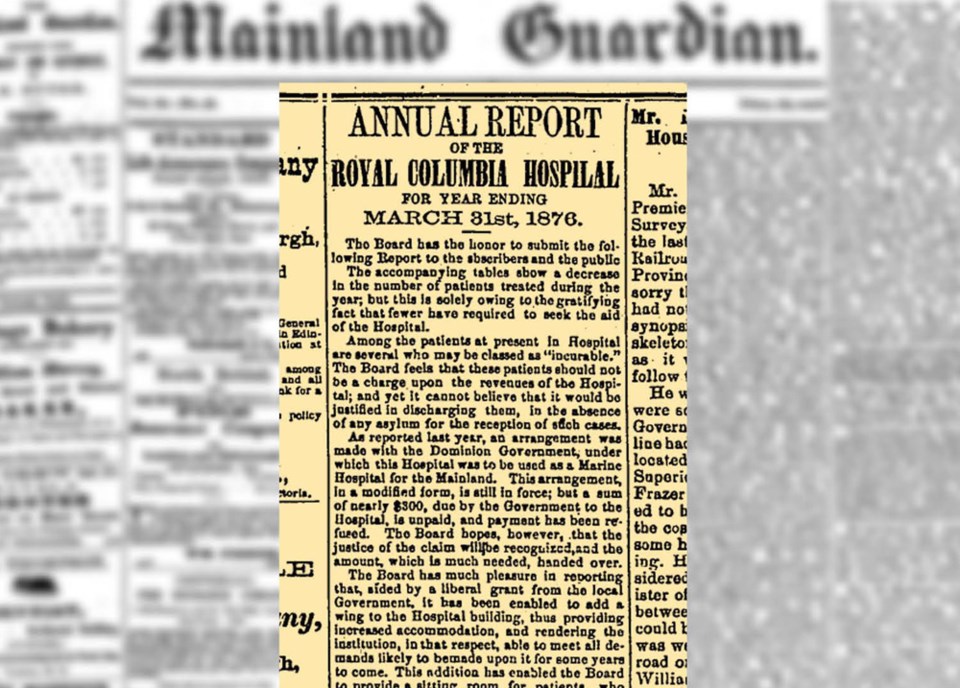This week’s journey through the headlines takes us back to 1876, when New Westminster residents benefited from the services of a much smaller — but no less valued — version of the hospital we know today.
The May 18, 1876 edition of the Mainland Guardian newspaper carried the annual report of what was then known as the Royal Columbia Hospital (for the year ending March 31, 1876).
In all, the hospital had treated 81 patients in that time: 71 indoors and 10 outdoors.
The year had also included a major highlight for the hospital: the addition of a wing to provide increased accommodation and allow it to meet the demands of the coming years. A highlight of the new wing was a sitting room for patients.
“The expenditure of a small sum in painting and papering, and in effecting some much-needed alterations and improvements in the closets, would now make the Hospital one of the best appointed institutions on the coast,” the Mainland Guardian reported.
The report provided a breakdown on diseases treated over the year. Most commonly seen were paralysis, with nine cases; rheumatism, with seven; and erysipelas (a skin infection) and ulcers with four each.
Wounds and accidents accounted for 14 cases, including four fractures and two shot wounds.
The vast majority of patients were unmarried (58 in total, with seven married patients and six widowers). Their occupations ran the gamut of jobs, from farmers and labourers to cooks and blacksmiths. Most commonly represented were labourers (16), sailors (14), miners (nine) and blacksmiths (five).
The report also raised a concern about the ongoing need for care for some patients “who may be classed as ‘incurable.”
“The Board feels that these patients should not be a charge upon the revenues of the Hospital, and yet it cannot believe that it would be justified in discharging them, in the absence of any asylum for the reception of such cases,” it said.
New Westminster is a city full of history — and that history includes a variety of community newspapers over its many decades.
In this weekly series, we're taking a look back at the headlines from some of those newspapers, shining a spotlight each week on a notable news story, person or moment from this week in New West history.
Watch for it online every Thursday.
📢 Got thoughts to share? Send us a letter.
Follow Julie MacLellan on Twitter @juliemaclellan.
Email Julie, [email protected]





